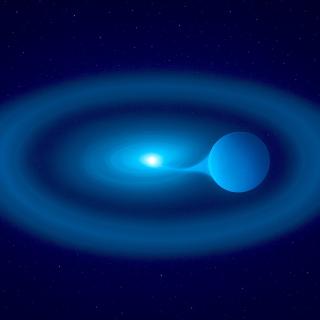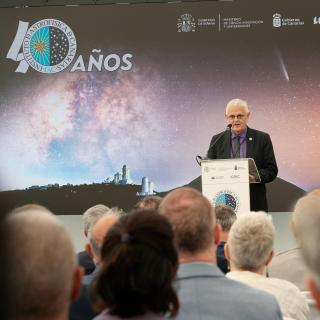It may interest you
-
 La Fundación” la Caixa” prosigue con su compromiso con el fomento de la investigación en España a través de sus distintas convocatorias de becas. Recientemente, ha concedido 100 becas de doctorado y posdoctorado para que investigadores de excelencia desarrollen sus proyectos en universidades y centros de España y Portugal. En este sentido, refuerza los lazos con el Instituto de Astrofísica de Canarias (IAC) que ha recibido a dos de las cien personas becadas en estas modalidades. A través de los programas INPhINIT, dirigido a personal doctorando, y Junior Leader, enfocado en la etapaAdvertised on
La Fundación” la Caixa” prosigue con su compromiso con el fomento de la investigación en España a través de sus distintas convocatorias de becas. Recientemente, ha concedido 100 becas de doctorado y posdoctorado para que investigadores de excelencia desarrollen sus proyectos en universidades y centros de España y Portugal. En este sentido, refuerza los lazos con el Instituto de Astrofísica de Canarias (IAC) que ha recibido a dos de las cien personas becadas en estas modalidades. A través de los programas INPhINIT, dirigido a personal doctorando, y Junior Leader, enfocado en la etapaAdvertised on -
 A greedy white dwarf star in our own Milky Way galaxy is devouring its closest celestial companion at a rate never seen before, according to an international study involving the Instituto de Astrofisica de Canarias (IAC) and the University of La Laguna (ULL). The research, published in the journal Monthly Notices of the Royal Astronomical Society , found the double star, named V Sagittae, is burning unusually bright as the super-dense white dwarf is gorging on its larger twin in a feeding frenzy. Experts think the stars are locked in an "extraterrestrial tango" as they orbit each other everyAdvertised on
A greedy white dwarf star in our own Milky Way galaxy is devouring its closest celestial companion at a rate never seen before, according to an international study involving the Instituto de Astrofisica de Canarias (IAC) and the University of La Laguna (ULL). The research, published in the journal Monthly Notices of the Royal Astronomical Society , found the double star, named V Sagittae, is burning unusually bright as the super-dense white dwarf is gorging on its larger twin in a feeding frenzy. Experts think the stars are locked in an "extraterrestrial tango" as they orbit each other everyAdvertised on -
 El Instituto de Astrofísica de Canarias (IAC) ha celebrado, este jueves 24 de julio de 2025, el 40 aniversario de la inauguración oficial de su sede central y de sus dos observatorios. Un acto que ha estado centrado en destacar el trabajo de los cientos de personas que han contribuido a convertir el IAC en uno de los centros de excelencia investigadora y técnica más importantes del mundo. En el acto, el director fundador del IAC, Francisco Sánchez, ha tenido un papel fundamental pese a que sus problemas de salud no le hayan permitido participar en el mismo. El lema de este 40 aniversario haAdvertised on
El Instituto de Astrofísica de Canarias (IAC) ha celebrado, este jueves 24 de julio de 2025, el 40 aniversario de la inauguración oficial de su sede central y de sus dos observatorios. Un acto que ha estado centrado en destacar el trabajo de los cientos de personas que han contribuido a convertir el IAC en uno de los centros de excelencia investigadora y técnica más importantes del mundo. En el acto, el director fundador del IAC, Francisco Sánchez, ha tenido un papel fundamental pese a que sus problemas de salud no le hayan permitido participar en el mismo. El lema de este 40 aniversario haAdvertised on